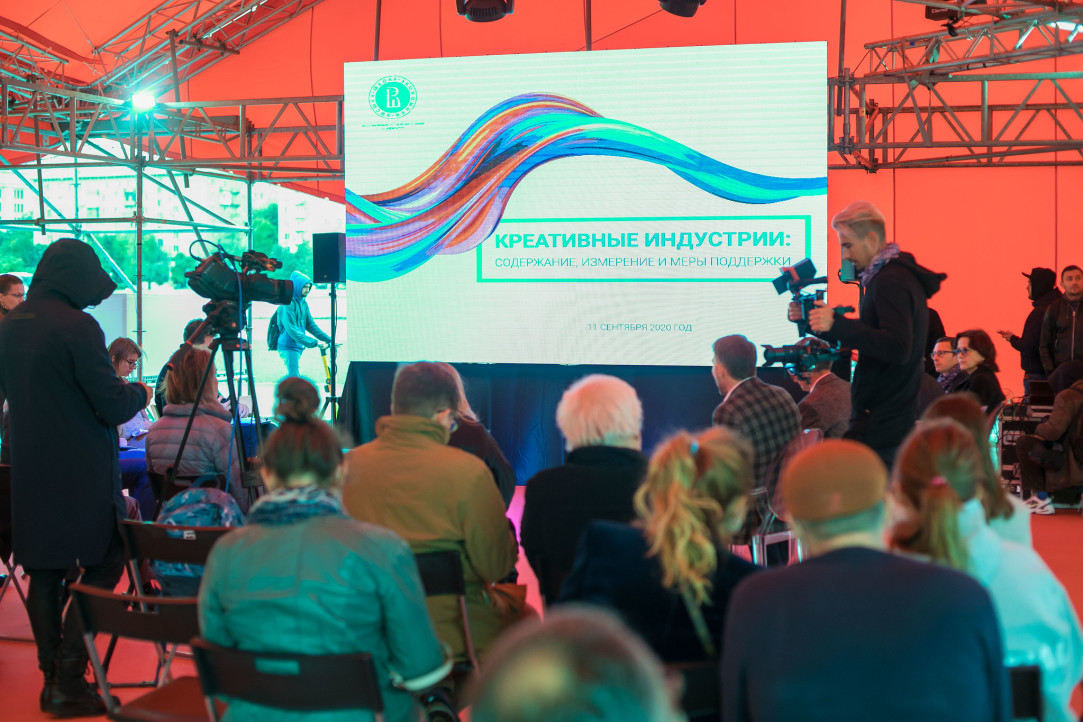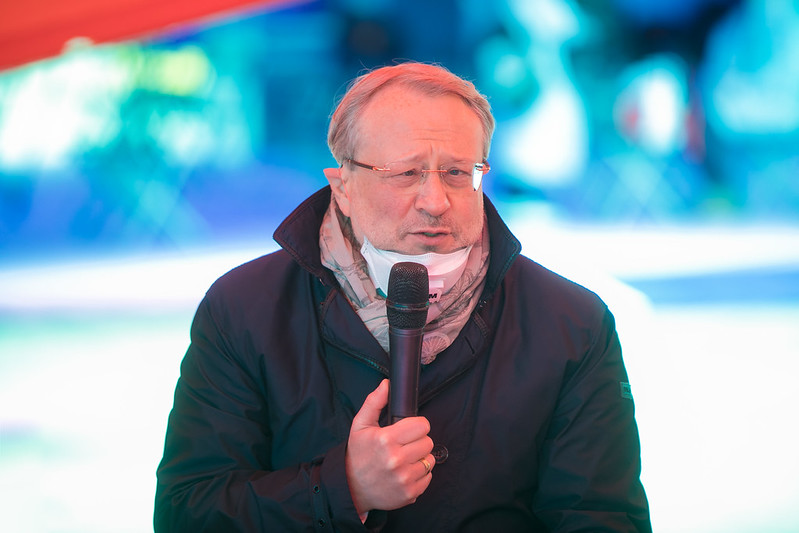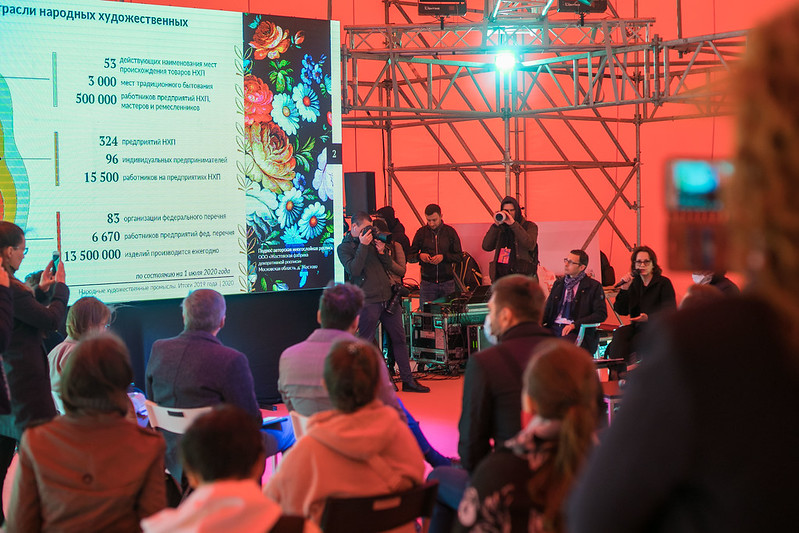Moscow’s Creative Capital Measured by HSE

For the first time, experts from HSE University presented the results of a large-scale pilot study of Moscow’s creative industries. The sector’s share in the city’s economy amounts to 6.3%, with almost three-quarters of the added value of the capital’s creative sector provided by advertising, IT and broadcasting. These and other data were presented during the round table entitled ‘Creative Industries: Content, Measurement and Support Measures’.
The round table was organized as part of Russian Creative Week and took place on September 11, 2020. It was attended by experts, as well as representatives of the capital and the federal government.
The results of a pilot study by the Institute for Statistical Studies and Economics of Knowledge (ISSEK) at HSE University, which focused on developing approaches to measuring the creative economy, show a high level of penetration of creative professions in all sectors of the Moscow economy. They employ 12.1% of the total employed, with the majority (53.8%) concentrated in traditional industries. In terms of the creative sector’s contribution to the economy, Moscow is comparable to other mega-cities, as emphasized by Mikhail Gershman, Deputy Director of the HSE Institute for Statistical Studies and Economics of Knowledge (ISSEK), even despite its notable industrial potential by world standards. Almost three-quarters of the added value of Moscow’s creative economy is provided by advertising, IT and TV and radio broadcasting.
The growth of the creative industries is markedly higher than that of the region and the country. Many capital cities, making their support a front and centre issue, began to grow very quickly, noted the head of the Entrepreneurship and Innovation Development Department of Moscow, Alexei Fursin. He gave the example of Great Britain, where the creative sector grew five times faster than the national economy. The British experience was described in greater detail by Ian Miles, Professor at the University of Manchester and the Scientific Director of the Laboratory for Economics of Innovation of ISSEK.
In Russia’s capital, the potential of creative industries is quite high according to the Entrepreneurship and Innovative Development Department of Moscow. To stimulate it, the Agency for Creative Industries was established in July, and a Strategy for the Development of Creative Industries is being developed. The HSE study also aims to better define the contours of the sector and to form more focused and systematic measures to promote creative products in domestic and foreign markets.
In total, the creative sector of the capital of Moscow employs some 113,000 legal entities and individual entrepreneurs. The sector’s share in the GRP of the city reaches 6.3%, surpassing the share of creative industries in the GDP of Russia (2.23%). As Alexei Fursin emphasized, the city authorities plan to maintain this high dynamic through a system of differentiated support measures for creative industries and individuals in the creative industries, especially through the introduction of subsidy instruments and the creation of appropriate infrastructure, facilities for networking, training by practitioners, and general promotion of creative industries.
‘We can no longer do without these people, either in government, business or the non-profit sector,’ says Head of Entrepreneurship and Innovation Development Department of Moscow.
‘Intellectual resources become key factors of production’
Economic activities related to knowledge and creativity, based on human capital, are becoming increasingly important. ‘In today’s global economy, intellectual resources are becoming key factors of production, while material resources are being overshadowed’, said Leonid Gokhberg, First Vice Rector and Director of the Institute for Statistical Studies and Economics of Knowledge (ISSEK) of HSE. ‘The creative industries are central to these processes. Their contribution to GDP in the leading countries of the world is estimated at between 3 and 5%.’

Apart from economic effects, creative industries produce essential cultural and social values. ‘For example, arts and crafts play the role of centres of cultural identity even in depressed territories, so it is important to support them regardless of their direct economic contribution,’ says Leonid Gokhberg.
Vitaly Kurennoy, Head of the HSE School of Cultural Studies, agrees with this point of view. ‘Very often people who are engaged in creative industries, such as arts and crafts, do not want to ‘make economics’ in the traditional sense. They are happy to do what they love, sufficient to support themselves, to engage with their traditional clientele. This is not an economy that seeks to maximize profits. But the very existence of these people, like the creative class as a whole, fundamentally changes the territory, the social characteristics of society.’
Creative industries are also an important driver of demand and account for a significant share of consumption. According to experts, Russian households spend significantly more on leisure and cultural activities than on health care and education.
‘Creative images can become a type of capital’
The industry itself grew out of trade, Gulnaz Kadyrova, Russia’s Deputy Minister of Industry and Trade, reminded the discussion participants, and spoke about the current state of the Folk Arts and Crafts Industry (FAC).
In total, data from the Russian Federal State Statistics Service (ROSSTAT) in 2019 show that there are about 500,000 people working in FAC. In 63 constituencies of the Russian Federation, 3,000 places of traditional artistic life have been identified, 78% of which are in rural areas. At the same time, 95% of FAC production is concentrated in 20 regions. The main centres are Nizhny Novgorod, Moscow region and Dagestan. In 2019, the volume of production of FAC products reached RUB 7.9 billion, an increase of 45% from 2017-2019. Due to the pandemic, sales fell by 70%. The sector has been identified as one of the most seriously affected, and RUB 380 million have been allocated for its support, in particular for 83 enterprises from the federal list.

Creative industries include not only those based on traditional industries, but also new and emerging ones that are based on digital technologies. Maxim Ksenzov, Deputy Minister of Culture of the Russian Federation, shared large-scale plans to create digital images of the entire cultural space of the country—historical monuments, museum exhibitions, folklore heritage, even recipes, patterns and other not always obvious objects of cultural heritage of the peoples of Russia.
In the Ministry, he is responsible for digitization, in particular restarting the ‘State Catalogue’ system (Goskatalog). ‘When we create a user-friendly [system] interface, define the legal possibilities of acquiring rights to use digital images, create conditions where they can easily and conveniently be included in commercial activities, then architects, game creators, representatives of other creative industries, and from different regions of the country will be able to create new products that can be promoted internationally.’ Ksenzov is certain that in recreating the industry based on digital principles, it is important for these new resources to be properly valued, accounted for and capitalized. Creative images can become one of the types of capital of citizens, companies, and countries.
‘We cannot manage if we neither measure nor understand’
The first Russian law On Creative Industries was adopted in the Khanty-Mansiysk Autonomous District (Yugra) in July of this year. The document defines creative activity as an activity based on the creative process, ideas, knowledge, skills, talent and unique qualities (attributes). Creative industries are areas of creative activity associated with the production (reproduction), promotion, distribution or sale of a creative product or products. The law sets out 12 areas, from visual arts and television to education and R&D. Forms of support for creative industries, including financial and property support, are also listed.
Speaking at a round table via video link, Director of the Department of Economic Development—Deputy Governor of Yugra Nikolai Milkis noted that about 10,000 SMEs fit the definition of creative industries. The regional authorities plan to increase their share in the regional economy by building a system of financial and non-financial support based on the “four pillars”: legal regulation, project initiative, development institutions and a competitive environment. Nikolai Milkis believes that at the federal level, Russia’s Ministry of Economic Development should coordinate all support measures for these industries.
Evgeniy Kutsenko, Director of the Russian Cluster Observatory Centre of ISSEK, who moderated part of the round table, believes it is important ‘to form at the national level a set of support measures and scalable solutions appropriate for the regions, as well as to develop general rules to determine priorities in this area.’ Leonid Gokhberg also spoke of the need to assemble and harmonize federal and regional measures to support creative industries in a single ‘navigator’ format, citing the experience of the Moscow Innovation Cluster as an inspiring example.
In international practice, as in our country, a standardized classification of creative industries and a methodology for measuring their activities have not yet been developed. As Leonid Gokhberg pointed out, this is a serious challenge for the formation of evidence-based policy in this area.
‘We cannot manage if we neither measure nor understand,’ added Evgeniy Kutsenko. At the same time, creative industries are very different: there is fashion, there are arts and there are IT specialists. These people and these industries differ from each other more than each of them differs from the industry. This raises the question: Do we need one line of measures or different ones for different industries?’
Sergei Matveyev, President of the Federal Service for Intellectual Property, believes that ‘all industries that are based on creativity do not lend themselves to uniform treatment, they will always be different. The only thing that unites them is that they create the bulk of their added value through knowledge. It is this ‘intangible component’—the share of intangible assets and intellectual rights—that can be used to measure them.’
Mikhail Gershman briefly touched upon methodological issues in his presentation of the pilot study. Three basic methods were used to assess the sector: sectoral (per OKVED, the Russian Classification of Economic Activities), calculations for professional employment in creative professions, and the volume of international trade. He mentioned one more possible, but very resource-intensive, method—measuring the time spent on creative work in the economy.
It was decided to discuss methodological approaches to measuring the creative economy at a special seminar. An analytical report by HSE, with detailed results of the pilot study of Moscow’s creative industries, will be published in the coming months.

